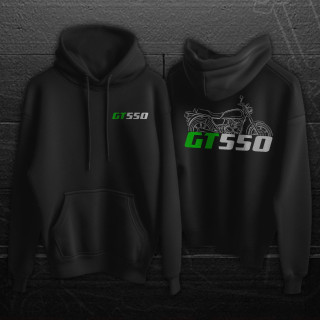This radical Suzuki 1400 chopper is sort of a bike from a different era. The motorcycle Arnold Garlick started with is little different from the Intruder 1400 sold today, but he was customizing it back when few companies were interested in the personalizing potential of Japanese cruisers. So Garlick, a headhunter in the computer industry, created his custom Intruder the old fashioned way, with imagination, persistence and patience with the details.

It wasn't that long ago. Garlick basically devoted 1995 to building his machine. The '87 1400 had originally been given to baseball great Reggie Jackson. Garlick was the third owner. What he wanted was something with the lines of a good ol' in-your-face American chopper, but he didn't want just another Harley. In the Intruder, he saw a bike with plenty of potential to become something distinctive, something completely his own.
By 1997, he might have bought a one of the German frame kits being imported by Jardine, but in 1995 that possibility didn't exist. So Garlick cut the frame and kicked the steering head out five degrees, with help from Denny Berg (then running Time Machine). Berg, who has built numerous customs, including many Japanese-based machines, was "inspirational," according to Garlick. To get that way-low look, Garlick cut the top frame rails under the seat and dropped them down, making the biggest visual change to the bike. Instead of the covers used by Suzuki, Garlick filled the steering head area with plate, which was welded and smoothed out. The final frame was carefully aligned by Motorcycle Collision Specialties in Huntington Beach. Banzai Machine assisted with the fabrication of many items, including the side panels needed to fit the altered frame. Garlick carved his own top triple clamp to move the handlebar mounts forward.

Today, you can simply buy a big twin-cap fuel tank from Fat Tanks, but that wasn't available to Garlick, who had to carve up an aftermarket Harley fat bob tank with assistance from Banzai, making a completely new tunnel area to clear the protruding front carb on the Intruder. The metal work dropped the tank's capacity from four to three gallons. The rear fender also had to be shortened up front, though the stock, sanitary taillight arrangement was maintained. Garlick made the seat from a Harley pan and fabricated the chrome toolbox under the left side of the swingarm pivot. Ultra-short Works Performance shocks helped get the rear end low, at the price of travel. Garlick offers that he'd put on longer-travel shocks for a ride of any distance.
"Every nut and bolt came off," Garlick recalls of his year-long renovation of the Intruder. Even the engine came apart. Looking for more performance, Garlick enlisted Jordan Engineering to port and polish the heads and assist with jetting after pod-type filters were fitted to redesigned airboxes. No cams were available then, "but it really doesn't need them," Garlick says.

With the stock chrome head covers removed, Garlick fabricated dummy fins to fill in the area around the spark-plug cavity. These were bolted into the holes for the original covers. The finning on the crankcase below the cylinders was machined off. The cylinder were given a blue Kal Gard finish (no longer available) and their edges polished. Garlick was very pleased with the chroming done by Santa Ana Plating, which even made special fixtures to ensure plating in some of the crevices on his parts. A Harley oil cooler, it's side plates polished, was bolted on.
The paint job is sensational. It was a collaboration, with several shops applying various layers and Garlick supplying the inspiration. Crazy John Gilbert, famous flamer, applied the hot blue flames licking the side of the tank and created the texture in the white base coat, and Darrell Penny applied the drop shadows and other details.
Some of the pieces used in the final assembly were readily available. Jardine already had its pretty forward foot controls back then, and the firm also made the pipes, although Garlick modified them to tuck in more tightly. Garlick used Buchanan stainless-steel twisted spokes on a stock-sized 21-inch front rim. At the rear he used an 18-inch Sun rim with a low-profile 180/60 Metzeler tire in place of the tall 15-inch stocker. The front fender was chopped and bobbed with advice from Denny Berg. Ted Sands at Performance Machine created brackets to mount PM's six-piston front and four-piston rear brake calipers, which are now in the firm's catalog. TMR, a racing oriented custom shop, custom-built the stainless-steel brake hoses, and Barnett supplied the cables needed for the 10-inch-rise bar. The mirrors came from Highway Classics and Garlick shortened the stems. The headlight is an off-the-shelf item from Headwinds, and small Harley aftermarket turn signals blink from the rear. The license plate frame was mounted vertically on the left side of the rear axle with a special nut from Legend. The sidestand had to be modified to work with the lowered chassis. There are no front turn signals, no passenger pegs and no speedometer.

By the time 1996 rolled around, Garlick was a lot lighter in the wallet, but he'd accomplished what he set out to do. He'd turned his Japanese cruiser into "a legitimate chopper." He also had a completely unique motorcycle, one that will never meet its mate at every corner-or any corner.
Credit: motorcyclecruiser
#Moto #Bike #Custom #Intruder #Suzuki






























